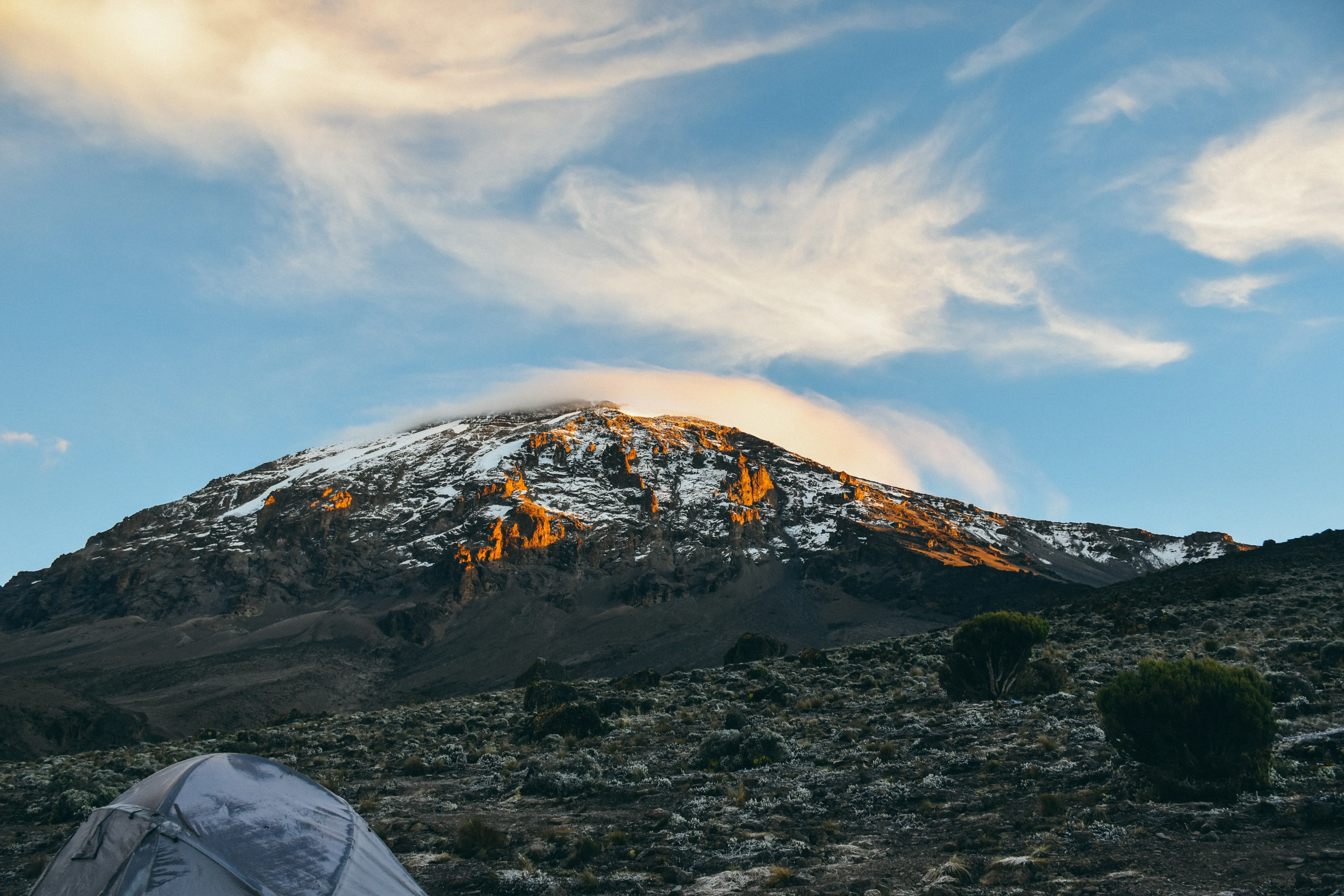
Mount Kilimanjaro National Park, located in northeastern Tanzania, is home to Africa’s highest peak, Mount Kilimanjaro. This iconic mountain, rising 5,895 meters (19,341 feet) above sea level, is the tallest free-standing mountain in the world and a magnet for adventurers and nature enthusiasts from around the globe. The park, covering approximately 1,688 square kilometers (652 square miles), was designated a UNESCO World Heritage site in 1987 due to its unique geological features, diverse ecosystems, and cultural significance.
Climbing Mount Kilimanjaro is like taking a journey from the equator to the Arctic, passing through five distinct ecological zones. Starting in the lush montane forests, trekkers encounter a diverse range of flora and fauna. The next zone, the heath and moorland, features giant heathers and unique plant species such as the giant lobelia and senecio. Above this, the alpine desert is characterized by rocky landscapes and sparse vegetation. Finally, the arctic summit zone is a stark, icy wilderness with glaciers and snowfields, providing a surreal contrast to the tropical forests below. This rapid transition in ecosystems is one of Kilimanjaro’s most fascinating features.
Mount Kilimanjaro offers several routes to the summit, each with its own unique features and challenges. The Marangu Route, also known as the "Coca-Cola Route," is the oldest and most established path, featuring hut accommodations. The Machame Route, or "Whiskey Route," is popular for its scenic beauty and diverse landscapes, though it is more challenging. The Lemosho Route is known for its stunning views and lower traffic, providing a more tranquil trekking experience. Other routes include the Rongai, Shira, and Umbwe routes, each offering different perspectives and experiences on the journey to Uhuru Peak.
While the focus is often on reaching the summit, Mount Kilimanjaro National Park is also rich in biodiversity. The montane forests at the mountain’s base are home to a variety of wildlife, including blue monkeys, colobus monkeys, and the elusive leopard. Birdwatchers will delight in spotting species such as the Hartlaub's turaco, malachite sunbird, and African pygmy kingfisher. As trekkers ascend, the changing climates support unique vegetation, from dense forests and heathers to the sparse alpine desert flora, adding to the mountain’s ecological diversity.
The slopes of Mount Kilimanjaro are inhabited by the Chagga people, who have lived in harmony with the mountain for centuries. The Chagga have a rich cultural heritage and are known for their traditional farming practices, which include coffee cultivation. Visitors can explore Chagga villages and learn about their customs, folklore, and traditional way of life. Engaging with the local communities provides a deeper understanding of the cultural significance of Kilimanjaro and its role in the lives of the people who live in its shadow.
The best time to climb Mount Kilimanjaro is during the dry seasons, which are from January to mid-March and from June to October. During these periods, the weather is more stable, and the trails are less muddy, making for safer and more enjoyable trekking conditions. The rainy seasons, from March to May and November to December, can make the trails more challenging due to slippery paths and reduced visibility. However, climbing during the shoulder seasons offers the advantage of fewer crowds, providing a more serene experience on the mountain.
Preparing for a trek up Mount Kilimanjaro requires careful planning and physical preparation. Acclimatization is key to avoiding altitude sickness, so it is recommended to choose routes that allow for gradual ascent and include rest days. Physical training, including cardiovascular exercises, hiking, and strength training, will help build the stamina needed for the climb. Essential gear includes layered clothing for varying temperatures, sturdy hiking boots, a quality sleeping bag, and trekking poles. Hiring experienced guides and porters is also crucial for a safe and successful ascent.
Mount Kilimanjaro National Park is committed to preserving its unique ecosystems and cultural heritage. Conservation efforts include anti-poaching measures, habitat restoration projects, and initiatives to reduce the environmental impact of trekking activities. Sustainable tourism practices are encouraged, such as minimizing waste and supporting local communities. By following guidelines and respecting the environment, visitors can help ensure that Mount Kilimanjaro remains a pristine natural wonder for future generations to enjoy.
Mount Kilimanjaro National Park is accessible via Kilimanjaro International Airport, located approximately 40 kilometers (25 miles) from the town of Moshi, the main gateway to the park. From Moshi, visitors can arrange transportation to the various trailheads. The town of Arusha, located about 90 kilometers (56 miles) from the park, also serves as a convenient base for travelers. Whether you are embarking on a trek to the summit or exploring the park’s lower slopes, the journey to Mount Kilimanjaro promises an unforgettable adventure in one of Africa’s most iconic landscapes.
Ready to embark on your dream adventure? Click the button below to start planning your trip with us!